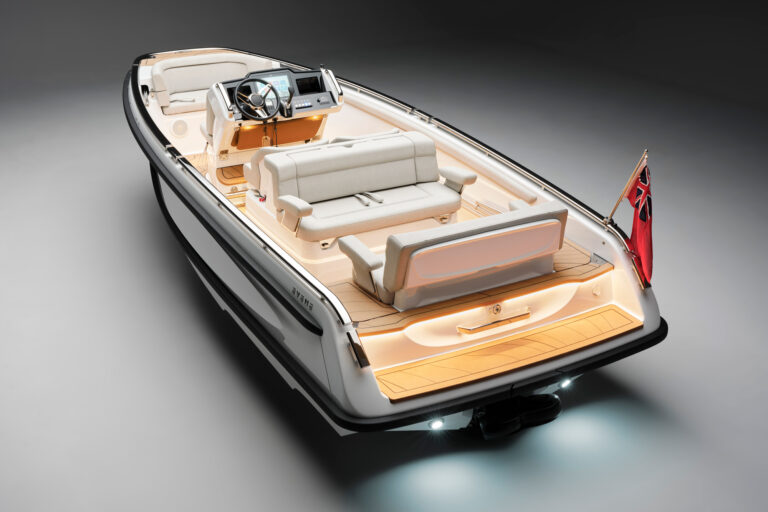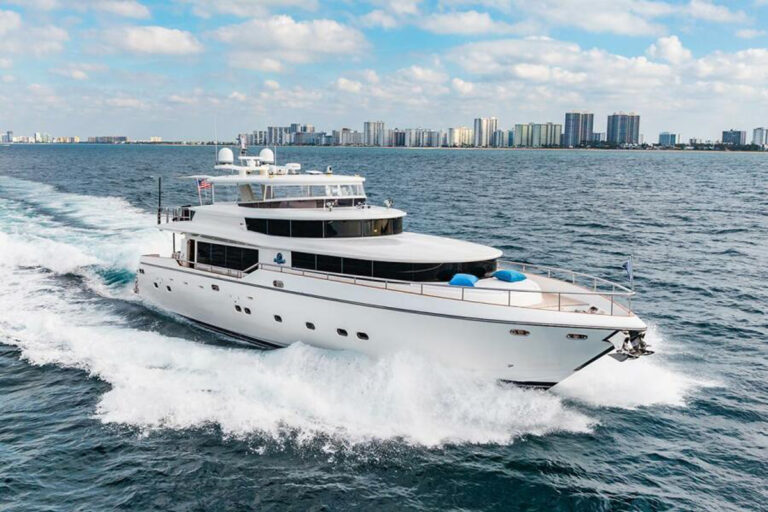Delivering a 50-foot ocean racer home from a long offshore race, I’d exercised the skipper’s prerogative and staked out the starboard quarterberth as my private domain. I rationalized the choice, at least to the crew, by saying that it kept me handy to the cockpit in case they needed help changing sails and because the navigation station was next to the berth so I could regularly update our running plots.
In truth, I liked the quarterberth because fresh air came straight from the companionway and, being across from the galley, I could easily reach a cold Coke or a handful of Oreos without ever leaving the bunk. A side benefit was that I could overhear what was going on in the cockpit-nice not just because I enjoy eavesdropping, but because I had an inexperienced delivery crew of small-boat sailors.
Late one night, I was soundly asleep but with the seaman’s ear cocked for anything out of the ordinary. Most of the talk in the cockpit was about plans for getting home, complicated schemes for making fortunes, or simplistic plans to meet girls. And then it started.
One said to another, “You know, that green light has been in the same place for a long time.” My ears perked up a bit, and I drifted into a shallower sleep. A few minutes later, the other said, “That’s weird, the green light just turned into a red light.” Now both my ears had turned into pointed tufts, and one eye was open. Another minute went past, and the first said, “No, see, the green light’s over there and the red’s over there.”
Both eyes snapped wide open and my heart stopped as I raced into the cockpit to see my two idiot crew looking up at what seemed a 45-degree angle at red and green lights with something very dark in between.
“Turnthewheelturnthewheelturnthewheel!” I shrieked. The lout at the helm looked at me with mouth agape and I leaped the length of the cockpit, wrenched the wheel out of his grasp, and spun it hard over. Above us, the mainsail slammed in a wild jibe, but that was the least of our worries.
In what seemed like seconds, the mountainous white bow wave of the biggest tanker I’ve ever seen surged past, and we bounced and rocked as miles of red and black hull went past. As it disappeared into the darkness, the three of us looked at each other with the realization that we had barely survived being a long stripe of paint down the bottom of that ship, which would never even have noticed hitting us.
We had just violated the first two of Caswell’s Rules of the Road. Now, if you’re like most skippers, you probably think that there are only two sets of Rules of the Road: International and Inland. Technically, you’re right-but, over a period of 40 years, I’ve developed my own set.
The official rules, of course, are the International Regulations for Preventing Collisions at Sea (COLREGS) and the Inland Navigational Rules of the United States, better known as the Inland Rules. The COLREGS apply when you are on outer coastal waters and the high seas, while the Inland Rules cover lakes, rivers and near coastal areas.
The reality of life (and Murphy’s Law) is that any time two boats are on the water, there is a chance of collision-as we discovered that night. So Caswell’s Rules combine COLREGS, Inland Rules and the Golden Rule (Do unto others…) to avoid any scrapes on the water. One major benefit of Caswell’s Rules is they apply at all times; another is they’re simpler; and, because of that, they’re easier to remember. That alone would make them worth a look, so here they are:
1. Big Boats Always Have The Right-Of-Way. It doesn’t matter who really has the right-of-way here, because you’ll always lose if you try to sneak in front of a tanker or a tug pushing a barge. Your engine can die suddenly or you can misjudge their speed (it’s easy to do); if so, the only winners will be your heirs and some lawyers. Remember the four most dangerous words in yachting: “We can make it.” Under Caswell’s Rules, if you ever look at a ship and say those words, you must be slapped silly by your crew-just like Capt. Queeg in The Caine Mutiny.
2. Always Assume They Don’t See You. Whether it’s a 16-footer or a tugboat, you’ll never get in trouble if you always assume that the other skipper either doesn’t see you or is too stupid to know that you have the right-of-way. Defensive driving works just as well on the water as it does on land. As they say, you can be dead right just as easily as dead wrong.
3. Make Your Course Changes Early And Substantial. It’s hard to judge angles and distances on the water so, if you are planning to keep clear of another boat, change your course enough so it is readily apparent to the other boat-and do it early enough so they know what you are doing. Too many accidents happen when boats delay their actions too late, and then get trapped in an “after you, Alphonse” series of back-and-forth course changes that end up with a collision.
4. When In Doubt, Slow Down. This gives you time to think, as well as time for everyone involved to act intelligently and to avoid any problems. Remember that even at 10 knots, you’re moving at almost 17 feet a second.
5. Boats On Your Right Are Right. Why do you think they call it “right”-of-way, after all? Technically, your “danger zone” is from directly ahead to 112.5 degrees on the starboard side. But don’t push your rights with that 80 mph sportboat approaching from 113 degrees on the starboard side. He may be too busy nuzzling his honey’s neck to see you.
6. Keep Right. When two boats meet head-on or nearly so, each should turn to starboard, just as you would on a one-lane road in your car.
7. Overtakers Stay Clear. When two boats are moving in the same direction, the passing boat must keep clear. If you’re on a waterway like the Intracoastal, it’s also nice for both boats to slow down a bit so the wakes don’t spill the drinks.
8. Know The Flow. On inland waters, know which way the current is moving, because it affects the right-of-way. Boats going downstream have the right-of-way over those that are upbound, and boats going across a river must stay clear of those going up or down. Don’t worry about the reasoning: Just do it.
9. Remember To Honk. Unlike driving in your car, honking your horn is used to signal your intentions to other boats. One blast means starboard and two blasts is port. If the other boat agrees, they sound a similar signal. If they don’t, they’ll sound the danger signal of five or more honks. Slow down or stop until you both figure out what you’re doing.
10. Don’t Fight For Rights. There are literally hundreds of pages of rules covering vessels not under command, vessels unable to maneuver, seaplanes, rowboats and even anchored boats. Wouldn’t you feel kind of dumb running into an anchored boat thinking you had the right-of-way?
The COLREGS and Inland Rules can be complex and confusing to beginners and old salts alike. The essential point is to avoid collisions, which, as we all know, can ruin your whole day, so there is one last Caswell rule.
11. Play Nice. This covers just about every other situation you might encounter. Leave “road rage” on shore and don’t use the Rules of the Road like a hammer to force other people out of your way. Stay away from situations that can lead to problems, give way even when you don’t have to, and remember to play nice with the other kids.
As the sergeant on the old Hill Street Blues television series always warned his officers at the end of each briefing, “Hey, let’s be careful out there!”









